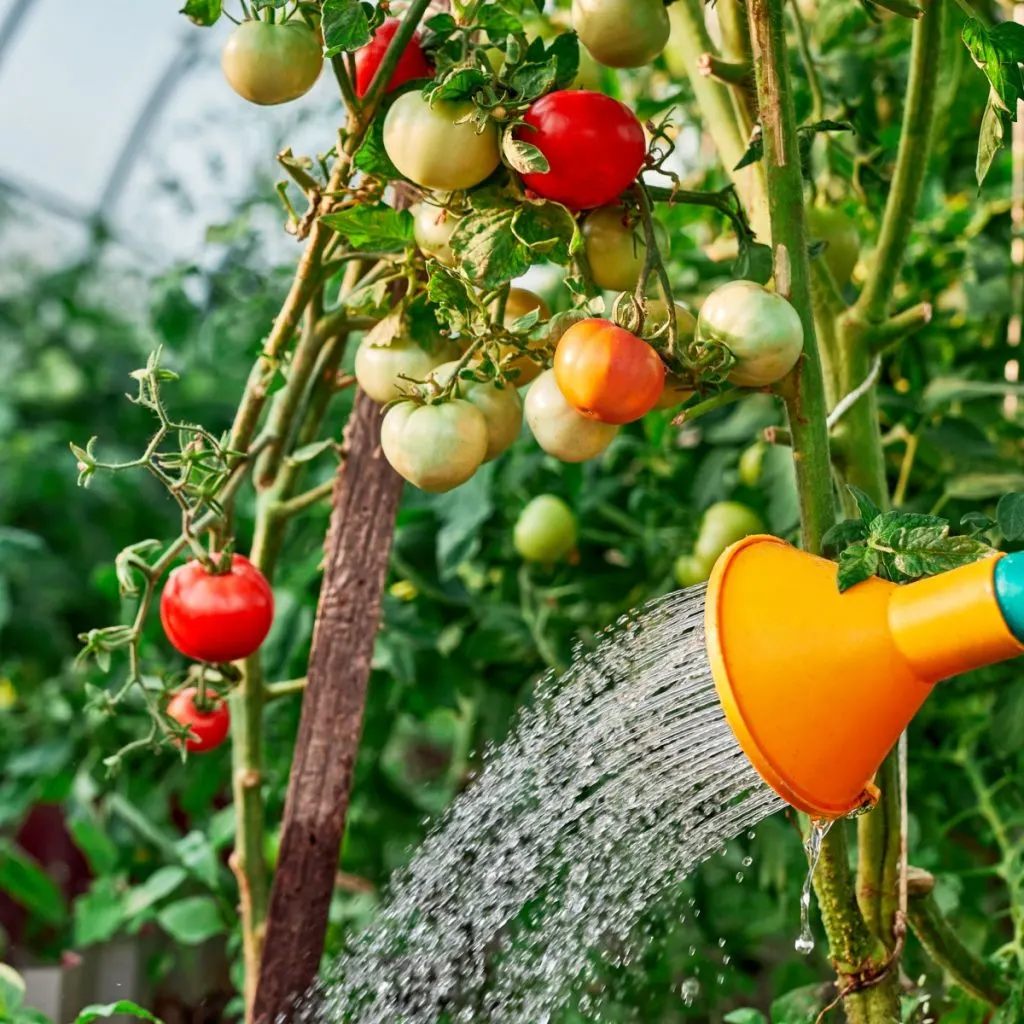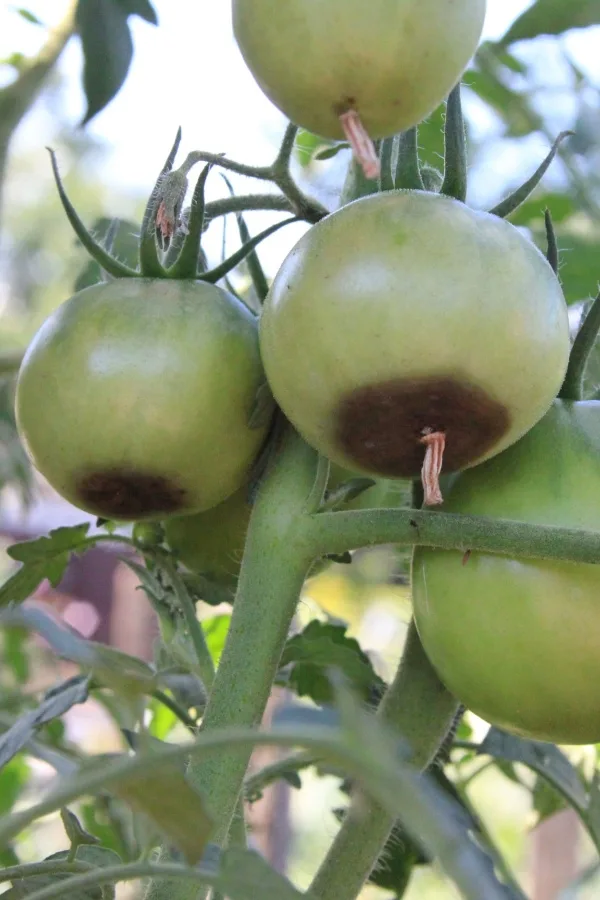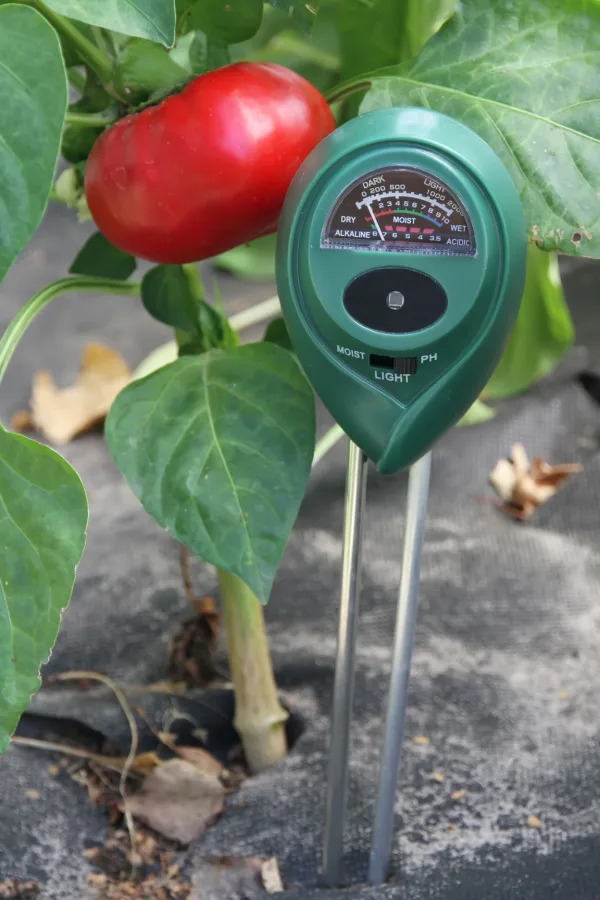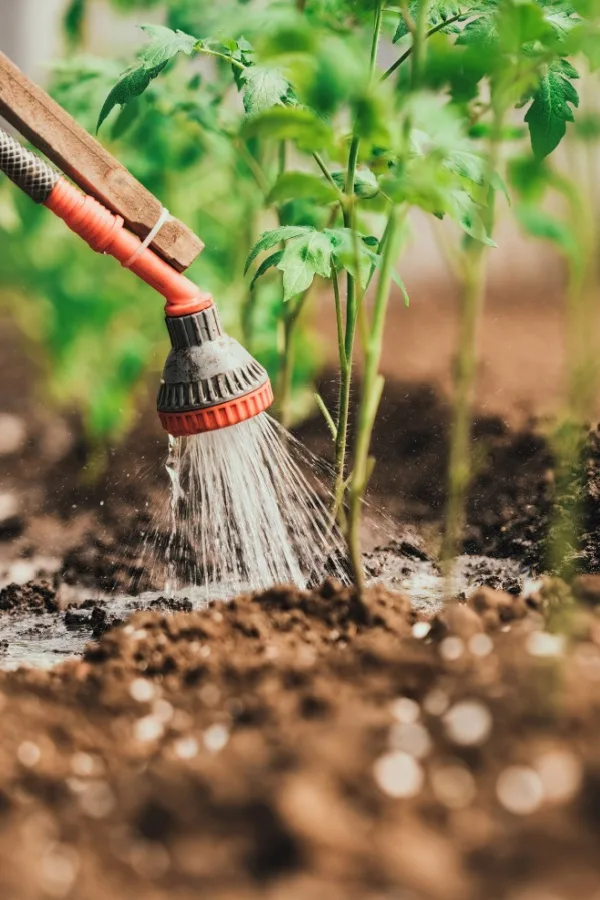One of the biggest keys to successfully growing healthy tomato plants is proper watering, but more times than not the problem with tomatoes is that they get too much moisture – which is exactly why it’s so important to avoid overwatering your plants!
Tomatoes themselves are made up of 95% water. But it’s not just the fruit that requires adequate moisture in order to grow and stay healthy. Fast growing and heavy producing tomato plants also require plenty of water in order to support healthy foliage, sturdy stems, and thick roots.
One thing is for sure, without the right amount of moisture, plants will quickly start to struggle. Especially during the hot summer months.

However, just like underwatering is often a cause for a decline in growth and production, so is overwatering. In fact, overwatering tomato plants is often one of the biggest reasons why many backyard garden tomato plants fail.
So how do you know how much to water – and how to avoid overwatering your tomatoes? Well, that is exactly the subject today’s article will answer!
How To Avoid Overwatering Tomatoes – 5 Signs Your Tomato Plants Are Getting Too Much Water!
Issues With Overwatering – How To Avoid Overwatering Tomatoes
The biggest problem with overwatering tomato plants occurs below the surface of the soil. Too much water will cause the plant’s roots to swell and expand. When this happens, the roots can no longer absorb and distribute nutrients and air throughout the rest of the plant.
Not only can the roots start to rot from too much moisture, but the growth of plants will stall and fruit production will be quickly put on hold. And without the proper nutrients, tomato plants quickly start to fail.
Tomato plants are one of the heaviest feeders in your vegetable garden. They require plenty of nutrients and resources from the soil in order to support huge vines and ripening fruit.

If the roots of the plant cannot absorb nutrients from the soil because they are too full of moisture already, then the plant’s health starts to decline. From there, it’s just a snowball of issues.
Weak or struggling plants are also much more susceptible to pest damage. Unhealthy plants also have a much higher chance of getting diseases like powdery mildew. In addition, any fruit that does grow often ends up with blossom end rot since the plants can’t absorb calcium from the soil. See our article: How To Prevent Blossom End Rot
There are some telltale signs that can help indicate that tomato plants are getting too much water. Even if plants start to show these signs, most of the time they can bounce back as long as the issue is corrected. Here are five of the most obvious signs your plants are getting too much water:
#1 Yellowing Leaves – How To Avoid Overwatering Tomatoes
First, look at the plant’s leaves. If you see signs of yellowing leaves, that’s a good indication that your tomato plants are getting too much water. Yellowing leaves are a direct sign that the plant is not getting enough nutrients.
The reason for that is that the roots are swollen from being waterlogged. And when that occurs, they can’t soak in the nutrients they need most. Unfortunately, many see the yellow leaves and water more, thinking the plant needs more moisture!

#2 Curling Leaves
Next, watch for curling leaves. While this can be an indication that your plants are starving for moisture, it can also mean that they are being overwatered. If the leaves are soft as opposed to dry and brittle, it’s likely they are suffering from too much moisture.
#3 Wilting Stems, Leaves & Root Rot
Third, look for signs of root rot. Although this can sometimes be difficult to see since the roots are buried under the soil, signs will still be there in the form of wilting leaves and stems. You can also check the base of the main stem right where it comes out of the soil. If it is soft and squishy, chances are you have root rot issues.
#4 A Lack Of Blooms
Another great indicator of too much water is a lack of blooms. Just as with yellowing of the leaves, plants that have swollen roots cannot absorb and bring nutrients to the rest of the plant. Without extra resources, the plant will put a halt on setting blooms.
#5 Cracking Or Splitting Fruit
Lastly, if there is fruit on the plants, watch for cracking or splitting skins. This usually means that the flesh of the tomato is expanding and growing at a faster rate than the skin due to excess moisture.
How To Avoid Overwatering Tomatoes
Unfortunately, you can’t go off of the appearance of the soil alone to know whether plants need watering or not. The heat of the sun can easily dry out the first couple of inches of soil while deeper down is still fully saturated.

Often, this leaves people thinking they need to water plants, resulting in overwatering. Since the plant’s roots are deep in the soil, that’s where you need to know the moisture levels.
One way to check the soil deeper down is to use a long wooden skewer. If the skewer is damp or there is soil stuck to it, hold off on watering. But if the skewer stays dry and clean, then plants are ready for a good soak.
Using A Soil Moisture Probe – How To Avoid Overwatering Tomatoes
One of the best ways of all to easily know whether to water or not is to use an inexpensive soil moisture probe. These devices sense the amount of moisture in the soil and provide a reading that takes the guesswork out of things. Product Link: XLUX Soil Moisture Meter
With tomato plants, the goal is to keep the moisture levels between 40 to 80%. If the level drops above that, hold off on watering. If the levels are below, it’s time to water.
Steps To Proper Watering Tomato Plants – How To Avoid Overwatering Tomatoes
If it’s time to water, you need to do so slowly and deeply. Watering every day or even every couple of days with small amounts of water will only cause the roots of plants to grow shallow and create weak plants.

But when you water deeply but less often, it forces the plant to grow its roots deep down into the soil. Not only does this provide plants with a strong base, but it allows the plants to access additional nutrients and resources deep down.
Also, water at the base of the plants. Watering overhead can cause a greater loss due to evaporation while knocking off delicate blooms. In addition, it can also leave plants more susceptible to diseases and mildew.
Lastly, hold off on watering until early in the morning or late at night. Water droplets left on the leaves can reflect the harsh sunlight and burn delicate foliage. Adding mulch can also help plants retain moisture levels for longer periods.
By checking tomato plants for the 5 most common signs of getting too much moisture, you can avoid overwatering your tomatoes – and keep your tomato plants healthy, productive, and perfectly watered all growing season long!
Simple Garden Life
Follow Our Facebook Page For Even More Great Tips! Simple Garden Life Facebook Page
Simple Garden Life is a website dedicated to keeping gardening fun, simple and enjoyable! We publish two new articles each week along with a new garden podcast episode every two weeks. This article may contain affiliate links.
